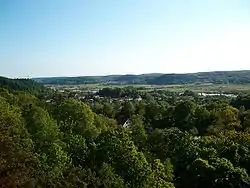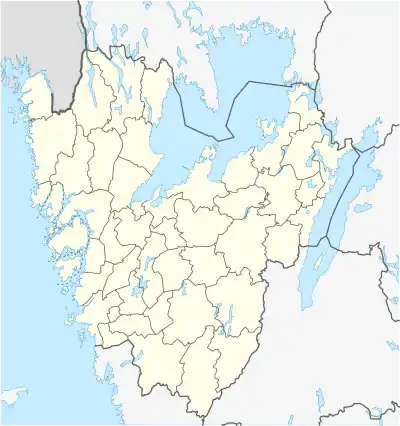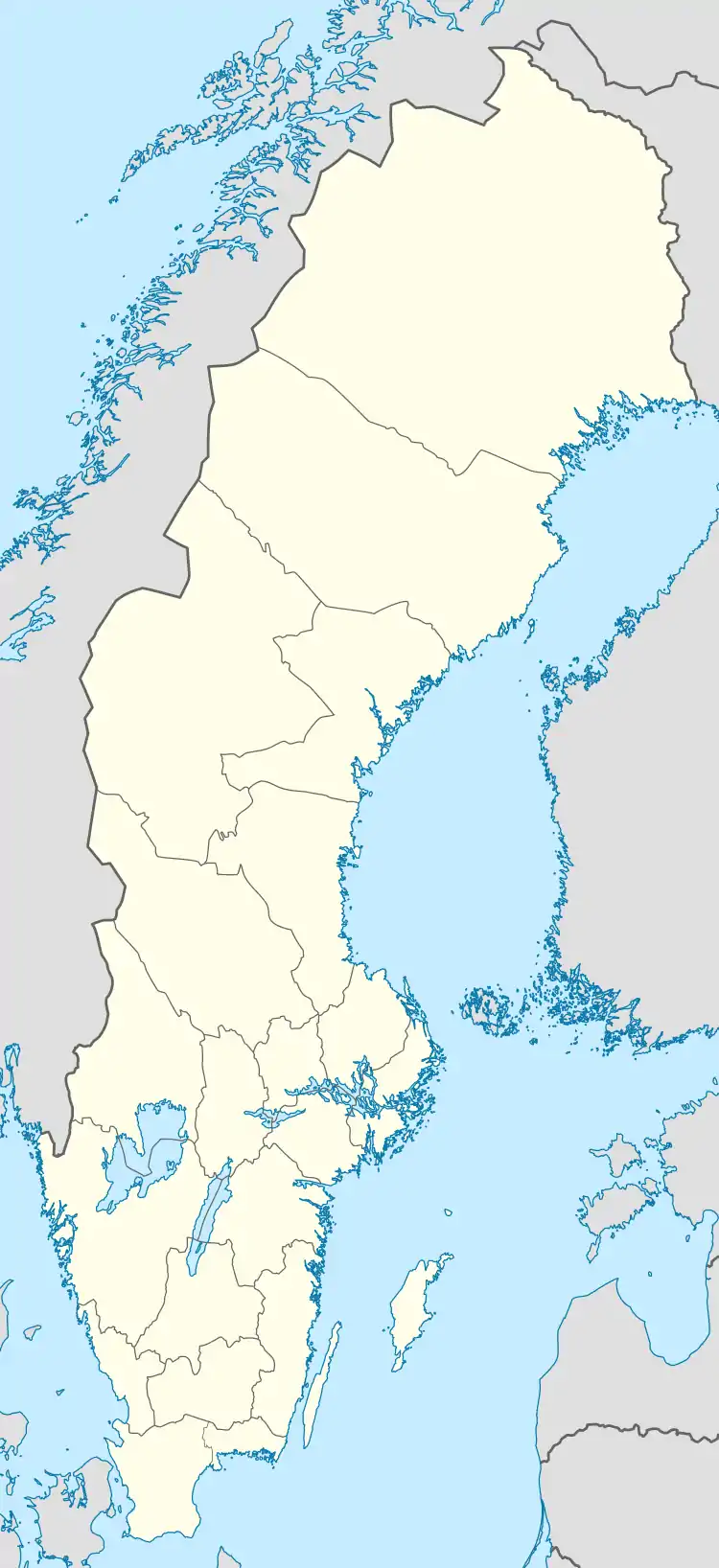Surte
Surte (Swedish pronunciation: [ˈsɵ̂ʈːɛ] (![]() listen))[2] is a locality situated in Ale Municipality, Västra Götaland County, Sweden. It had 5,798 inhabitants in 2010.[1] Surte Church is in Surte.
listen))[2] is a locality situated in Ale Municipality, Västra Götaland County, Sweden. It had 5,798 inhabitants in 2010.[1] Surte Church is in Surte.
Surte | |
|---|---|
 Surte in September 2008 | |
 Surte  Surte | |
| Coordinates: 57°49′N 12°01′E | |
| Country | Sweden |
| Province | Västergötland and Bohuslän |
| County | Västra Götaland County |
| Municipality | Ale Municipality |
| Area | |
| • Total | 3.61 km2 (1.39 sq mi) |
| Population (31 December 2010)(including Bohus)[1] | |
| • Total | 5,798 |
| • Density | 1,604/km2 (4,150/sq mi) |
| Time zone | UTC+1 (CET) |
| • Summer (DST) | UTC+2 (CEST) |
It is a located some 15 kilometers north of Gothenburg. Surte became well-known for its glass works that started its production in 1862 and developed to one of the major mechanized glass works in Sweden. It was bought by PLM in 1960 and shut down in 1978.
In Surte, there was a large landslide in 1950, which killed one person, destroyed 30 houses, needing more houses to be removed, making 450 people losing their home and blocking the river which had frequent ship traffic.
Surte was the hometown of Alexander Samuelson. Although he was not the designer, he was the man named on the 1915 design patent for the legendary contour Coca-Cola bottle.[3]
The international Grand Master of chess Gideon Ståhlberg, one of the world's strongest players in the 1940s, was born and is buried in Surte.
Surte is home to the bandy club Surte BK. They built one of the first indoor bandy arenas in Sweden (and subsequently in the world), which was the first in Götaland.[4]
The village Bohus, located 2½ km (1½ mile) north of Surte centre, has grown together with Surte and is in official statistics handled as one village.
References
- "Tätorternas landareal, folkmängd och invånare per km2 2005 och 2010" (in Swedish). Statistics Sweden. 14 December 2011. Archived from the original on 27 January 2012. Retrieved 10 January 2012.
- Jöran Sahlgren; Gösta Bergman (1979). Svenska ortnamn med uttalsuppgifter (in Swedish). p. 23.
- Alexander Samuelson, "Design for a Bottle or Similar Object," U. S. Patent D48160, Nov. 1915.
